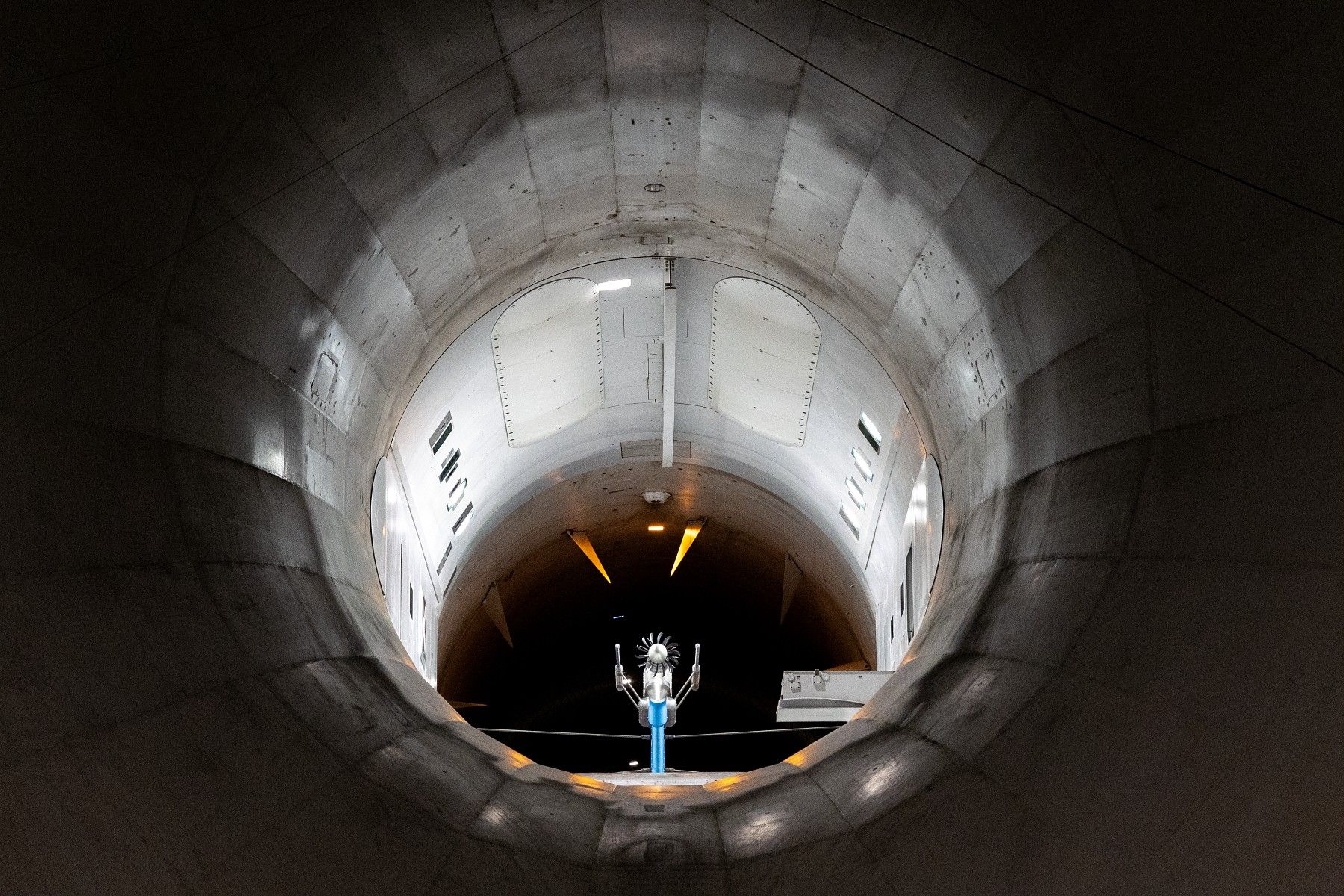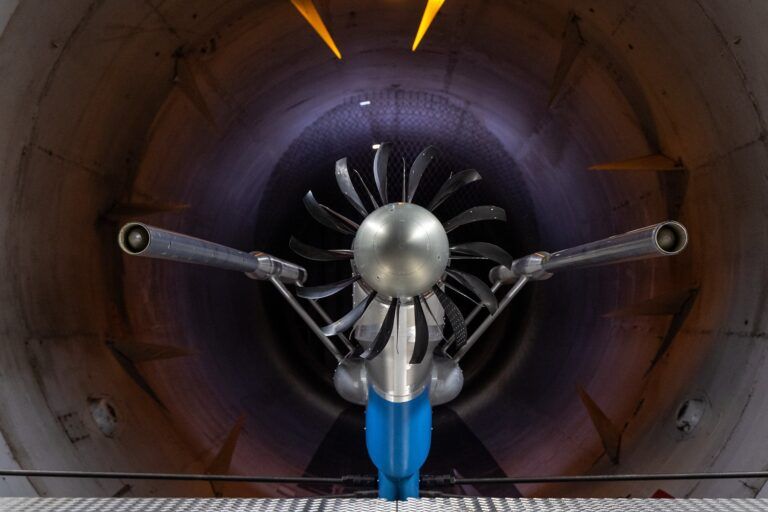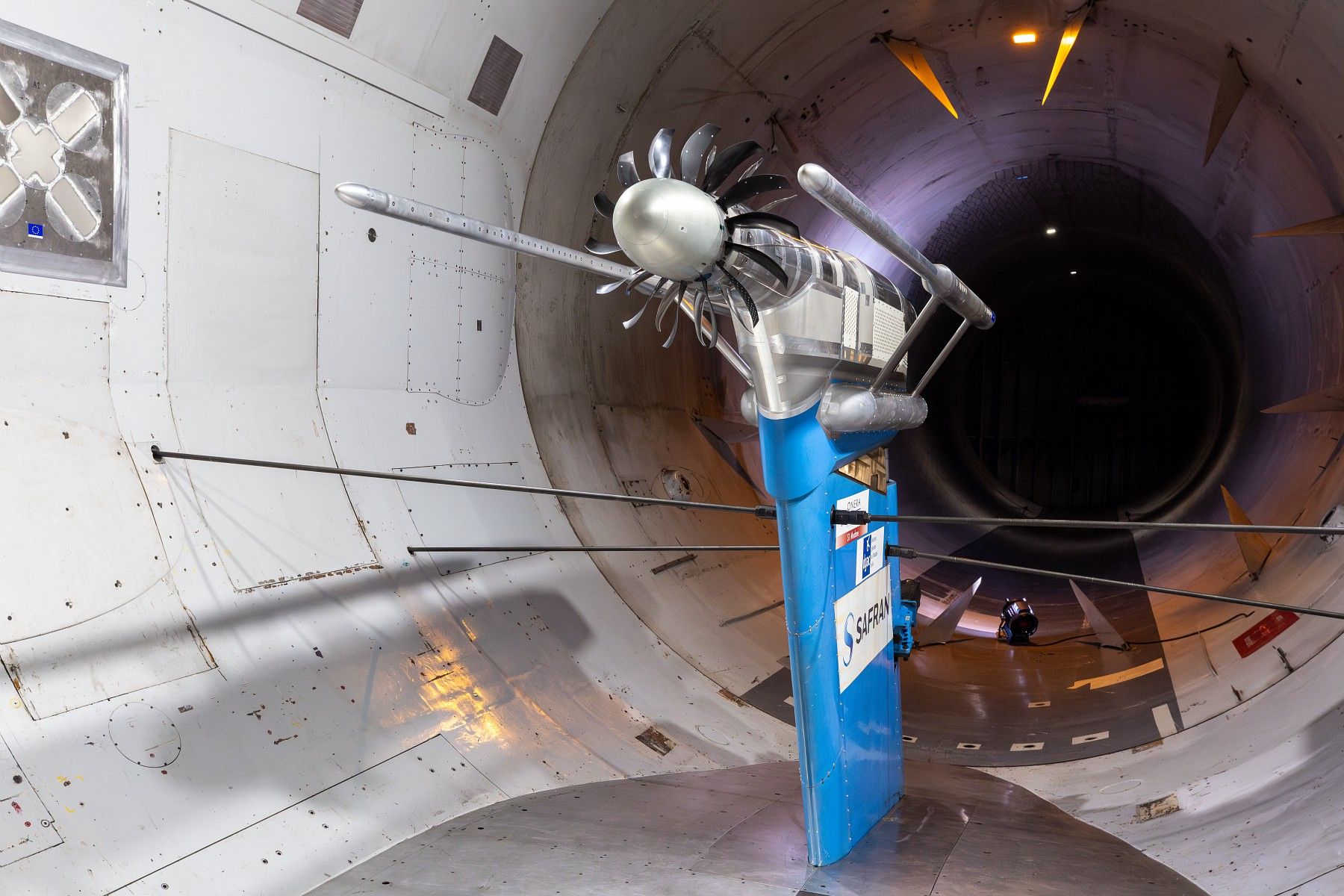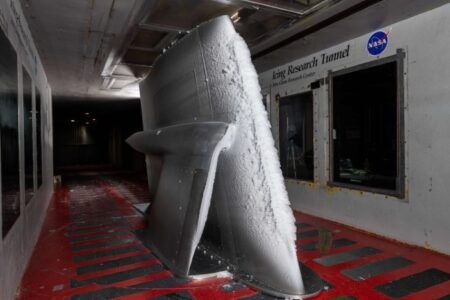France’s Safran has started wind tunnel testing a 1:5 scale demonstrator of the open fan engine it is developing with GE Aviation that could be used in the CFM RISE program.
The Revolutionary Innovation for Sustainable Engines (RISE) program was launched by CFM, a GE Aviation and Safran joint venture company, in 2021.
RISE is developing an open fan engine that will reduce aircraft CO2 emissions by 20% compared to current generation engines. Engineers on the program aim to have the engine flying on single-aisle commercial jets, by 2035 and estimate that when combined with the use of sustainable aviation fuel could reduce emissions by up to 80%.
The wind tunnel test program for the RISE model is being done at France’s national aerospace research agency ONERA’s wind tunnel facility in Modane, France.
Safran and ONERA are partnering on the tests as part of a four-year test and development program for the open rotor design being funded by the French Government called ECOENGInE. The research project is due to complete in 2028.
A 200-hour test campaign will first produce data to validate the design of the fan blades and assess the engine design’s aerodynamics and acoustics by simulating real-world airspeeds in a wind tunnel. This will be followed by simulation tests where the engine is mounted on a demonstrator plane wing section.
For these tests, Safran will use ONERA Modane’s S1MA, the world’s largest continuous flow transonic wind tunnel, which is 8m (26 ft) in diameter. The large size of the wind tunnel makes it possible to test engines in isolation or mounted on a wing structure.

Marie-José Martinez, wind tunnels director for ONERA said, “This series of wind tunnel tests is a major milestone in our research and technology roadmap, which aims to develop the technological building blocks for the next breed of commercial jet engines.
“With the RISE program, Safran is contributing our long-standing expertise to the development of the fan module to demonstrate the benefits of an unshrouded engine architecture on the ground and in flight by mid-decade.”
Safran is also involved in an EU-funded project called OFELIA (Open Fan for Environmental Low Impact of Aviation) project, with 26 other European companies and research institutions, including ONERA. Like RISE, OFELIA aims to develop an open rotor engine that is more efficient than current closed jet engines, but for smaller short to medium range aircraft.
In addition, the company has a wider test program being rolled out across Safran sites to mature the associated engine technologies for open fan rotors. Its Villaroche site in France has already completed ingestion tests on open fan blades and is building a new test stand that will feature an 8m (26 ft) -wide chamber for development and certification testing on the RISE program.
Open rotor designs offer the possibility of increasing engine efficiency because compared to turbofan engines they lack a fan duct. They compress and accelerate air through counter-rotating propellers to generate thrust, but without a fan duct can move more air, meaning bypass ratio can be more effectively increased, resulting in a savings in fuel consumption compared to turbofans.
However open rotor engine designs are not without their challenges, including their size, weight and noise they generate during operation.
CFM’s RISE program is developing and testing designs and technology that includes aero-acoustic optimisation, pitch control systems, contra-rotating reduction gearbox, lubrication, and cooling systems as well as the rotating parts within the nacelle.






